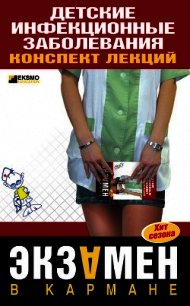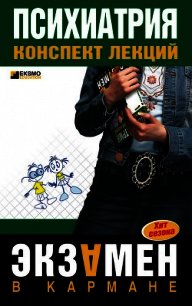Английский язык для медиков: конспект лекций - Беликова Елена (книги хорошем качестве бесплатно без регистрации .txt) 📗
Laryngopharynx is the region of the pharynx that surrounds the larynx. It extends from the tip of the epiglottis to the cricoid car tilage. Its lateral extensions are known as the piriform recess.
Oral cavity: the portion of the oral cavity that is posterior to the lips and anterior to the teeth is called the vestibule. The oral cavi ty proper has a floor formed by the mylohyoid and geniohyoid muscles, which support the tongue. It has lateral walls, consisting of the buccinator muscles and buccal mucosa, and a roof formed by the hard palate anteriorly and the soft palate posteriorly. Its posterior wall is absent and is replaced by an opening to the oropharynx, which is flanked by the pillars of the fauces.
The palate separates the nasal and oral cavities.
Hard palate is formed by the palatine process of the maxilla and the horizontal palate of the palatine bone. Its mucosa is supplied with sensory fibers from CN V2.
Soft palate consists of a fibrous membrane, the palatine aponeuro-sis, covered with mucosa. The portion that hangs down in the midline is the uvula, which contains the musculus uvulae. Two additional muscles (i. e., levator palati, tensor palati) insert into the palatine aponeurosis.
The tongue is a mobile, muscular organ necessary for speech. It is divisible into an anterior two-thirds and a posterior one-third by the sulcus terminalis.
Muscles of the tongue. These include the intrinsic and extrinsic muscles (i. e., palatoglossus, stylogiossus, hyoglos – sus, genioglos-sus). All of the muscles are innervated by CN XII except the palatoglossus, which is supplied by CN X. Arterial supply: The tongue is supplied by the lingual branch of the external carotid aitery.
Venous drainage. The lingual veins, which lie on the under-surface of the tongue, drain to the internal jugular veins.
Lymphatic drainage. The tip of the tongue drains to the submental nodes, and the remainder of the anterior two-thirds drains first to sub-mandibular, then to deep cervical nodes. The posterior one-third drains directly to deep cervi cal nodes.
New words
shared – разделенный
digestive – пищеварительный
anteriorly – раньше
upper – верхний
regions – области
communicating – взаимодействие
oral cavity – полость рта
anterior wall – передняя стенка
pharyngeal – глоточный
mucosa – слизистая оболочка
fibrous layer – волокнистый слой
longitudinal – продольный
circular layer – круглый слой
superior – выше
middle – середина
posterior nasal apertures – задние носовые апертуры
torus tubarius – трубный валик
auditory space – носоглоточный
nasopharyngeal tonsil – миндалина
fold – сгиб
Спряжение глагола to be (быть) в Past Simple Tense
(Past Indefinite Tense) Таблица 6.

Переведите на английский язык, используя таблицу 6.
1. Я был учеником.
2. Он был летчиком.
3. Она была доктором.
4. Мы были школьниками.
5. Они были рабочими.
6. Ты был рабочим.
7. Они были учениками.
8. Я был дома.
9. Он был в школе
10. Она была в кино?
11. Мы были в парке.
12. Они были в театре?
13. Она была молодая в то время?
14. Он был старый.
15. Она не была учительницей.
16. Они были сильные.
17. Она была больна.
18. Вы были больны?
19. Он был болен?
20. Я не был болен.
21. Я был болен вчера.
22. Она не была больна.
23. Мы были в кино.
24. Они не были в кино.
25. Они не были в школе.
26. Они были дома.
27. Вы были в парке вчера?
28. Он был в школе вчера?
29. Он был рабочим.
30. Она была актрисой.
Answer the questions.
1. What is the pharynx?
2. What shares the pharynx?
3. What has the pharynx?
4. What forms the anterior wall of the laryngopharynx?
5. What the pharyngeal wall con sists of?
6. What is nasopharynx?
7. Where is nasopharynx located?
8. What is the torus tubarius?
9. What is located directly above and behind the torus tubarius?
10. What is located between the pillars that houses the palatine tonsil?
Make the sentences of your own using the new words (10 sentences). Find the verb to be in the text. Explain why it is used in such a way?
ЛЕКЦИЯ № 36. Oral cavity
The oral cavity forms in the embryo from an in-pocketing of the skin, stomodeum; it is, thus, lined by ectoderm. Functionally, the mouth forms the first portion of both the digestive and respiratory systems. Various special structures are found in, or associated with, the mouth.
In humans the margins of the lips mark the junction between the outer skin and the inner mucous lining of the oral cavity. The roof of the mouth consists of the hard palate and, behind this, the soft palate which merges into the oropharynx. The lateral walls consist of the distensible cheeks. The floor of the mouth is formed principally by the tongue and the soft tissues that lie between the two sides of the lower jaw, or mandible.
The tongue, a muscular organ in the mouth, provides the sense of taste and assists in chewing, swallowing, and speaking. It is firmly anchored by connective tissues to the front and side walls of the pharynx, or throat, and to the hyoid bone in the neck.
The posterior limit of the oral cavity is marked by the fauces, an ap-perture which leads to the pharynx. On either side of the fauces are two muscular arches covered by mucosa, the glossopalatine and pharyngo-palatine arches; between them lie masses of lymphoid tissue, the tonsils. Hiese are spongy lymphoid tissues composed mainly of lympho-cytic cells held together by fibrous connective tissue. Suspended from the posterior portion of the soft palate is the soft retractable uvula. The palate develops from lateral folds of the primitive upper jaw. The palate of mammals consists of two portions. The hard palate, more anterior in position, underlies the nasal cavity. The soft palate hangs like a curtain between the mouth and nasal pharynx.
The hard palate has an intermediate layer of bone, supplied anteriorly by paired palatine processes of the maxillary bones, and posteriorly by the horizontal part of each palate bone. The oral surface of the hard palate is a mucous membrane covered with a stratified squamous epithelium. Anteriorly in humans there are four to six transverse palatine ridges: these diminish in prominence between fetal life and old age. A submucosal layer contains mucous glands and binds the membrane firmly to the periosteum of the bony component. Above the bone is the mucous membrane that forms the floor of the nasal cavity.
The soft palate is a backward continuation from the hard palate. Its free margin connects on each side with two folds of mucous membrane, the palatine arches, enclosing a palatine tonsil. In the midline the margin extends into a fingerlike projection called uvula. Both the hard and soft palate bear a seam, or raphe, along the midline. The oral side of the soft palate continues as the covering of the hard palate, and the submucosa contains mucous glands. The intermediate layer is a sheet of voluntary muscle.
Besides separating the nasal passages from the mouth, the hard palate is a firm plate, against which the tongue manipulates food. In swallowing and vomiting the soft palate is raised to separate the oral from the nasal portion of the pharynx. This closure prevents food from passing upward into the nasopharynx and nose. The closing action also occurs in speech.




